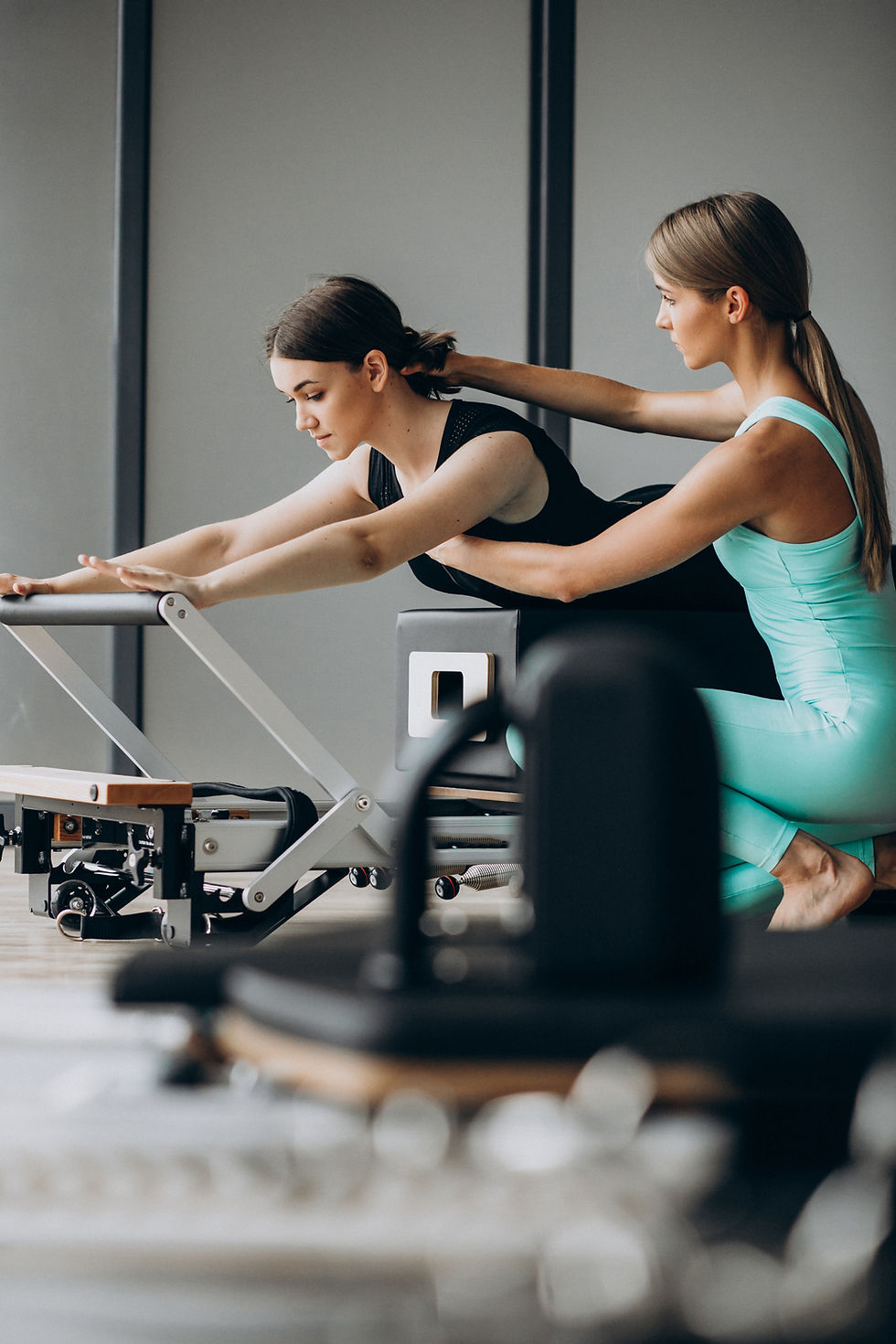Prenatal Pilates: Safe & Effective Movement for a Stronger Pregnancy
- Revity Pilates

- Jun 3
- 3 min read
Updated: Jul 26

Pregnancy is a time of incredible change—your body is growing, adapting, and preparing for childbirth. While staying active during pregnancy is essential for overall health, finding a safe and effective workout can be challenging.
That’s where Prenatal Pilates comes in. This low-impact, core-strengthening workout is specifically designed to help expectant mothers stay strong, flexible, and pain-free throughout pregnancy.
At Revity Pilates, our Prenatal Pilates classes are tailored to support women at every stage of pregnancy, helping them feel energized, comfortable, and prepared for birth.
Why Pilates is the Best Workout During Pregnancy
Unlike high-impact workouts that strain joints and overwork muscles, Pilates provides:
Gentle core activation to support a growing belly and prevent back pain.
Pelvic floor strengthening to prepare for labor and postpartum recovery.
Low-impact resistance training to maintain muscle tone without stress.
Breathwork & relaxation techniques to manage stress and improve oxygen flow.
Improved flexibility & mobility to ease common pregnancy aches and pains.
Pilates adapts to your body’s needs as pregnancy progresses, making it one of the safest and most effective forms of prenatal exercise.
The Benefits of Prenatal Pilates
1. Strengthens Core & Supports a Growing Belly
The Problem: As the baby grows, the abdominal muscles stretch, weakening core stability.
How Pilates Helps:
Engages deep core muscles without excessive strain.
Prevents diastasis recti (abdominal separation) by strengthening transverse abdominis muscles.
Supports better posture and spinal alignment, reducing back pain and discomfort.
2. Protects & Strengthens the Pelvic Floor
The Problem: Pregnancy puts extra pressure on the pelvic floor muscles, which can lead to incontinence or prolapse postpartum.
How Pilates Helps:
Focuses on pelvic floor activation through controlled breathing.
Improves muscle endurance for labor and delivery.
Helps with postpartum recovery, reducing the risk of complications.
3. Reduces Back, Hip, & Joint Pain
The Problem: Increased weight and hormonal changes (like relaxin) cause joint instability, hip tightness, and lower back pain.
How Pilates Helps:
Strengthens glutes, hips, and core to reduce strain.
Improves postural awareness to prevent excessive arching in the lower back.
Focuses on gentle stretching & mobility, keeping joints pain-free.
4. Improves Circulation & Reduces Swelling
The Problem: Poor circulation during pregnancy can lead to swollen ankles, varicose veins, and fluid retention.
How Pilates Helps:
Encourages gentle movement to improve blood flow.
Prevents stiffness and swelling in the legs and feet.
Reduces pregnancy-related fatigue by increasing oxygen intake.
5. Prepares the Body for Labor & Delivery
The Problem: Labor requires endurance, flexibility, and breath control—things many women don’t train for.
How Pilates Helps:
Teaches breath control techniques for a calmer, more controlled labor.
Strengthens legs, hips, and core, making pushing more effective.
Helps women maintain stamina during labor through controlled movement.
Best Pilates Exercises for Pregnancy
At Revity Pilates, we focus on pregnancy-safe movements that strengthen without straining the body:
Pelvic Tilts & Bridges – Builds glute & lower back strength while relieving tension.
Side-Lying Leg Work – Strengthens hips and inner thighs for pelvic stability.
Modified Core Activation – Engages deep core muscles without pressure on the abdomen.
Breathwork & Pelvic Floor Activation – Prepares for labor and postpartum recovery.
Gentle Spinal Mobility Work – Reduces lower back pain and stiffness.
Movements to Avoid:
Crunches or excessive forward flexion (to prevent abdominal separation).
Deep twists or high-impact movements (which may strain the pelvis).
Lying on the back for long periods after the second trimester (to avoid restricted blood flow).
When to Start Prenatal Pilates
Pilates is safe for all trimesters, but it’s always best to consult your doctor before starting.
First Trimester (Weeks 1-12): Light movement, breathwork, and foundational strength.
Second Trimester (Weeks 13-26): Focus on postural support, flexibility, and core stability.
Third Trimester (Weeks 27-40): Gentle movements, hip openers, and breathwork for labor prep.
Pilates is also beneficial postpartum—helping rebuild core strength and pelvic floor function after birth.
Safe & Supportive Prenatal Pilates at Revity
At Revity Pilates, we offer specialized Prenatal Pilates classes and private sessions tailored to each stage of pregnancy.
Gentle, pregnancy-safe exercises to build strength and reduce pain.
Small-group & private training options for personalized attention.
A safe, supportive environment for moms-to-be.
Ready to stay strong, comfortable, and confident during pregnancy? Book a Prenatal Pilates session at Revity Pilates today!
Medical Sources on Pilates Benefits:



